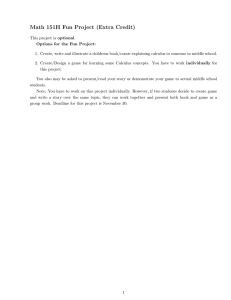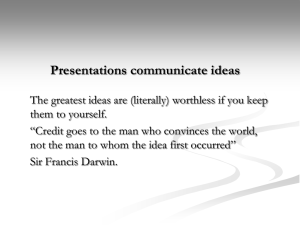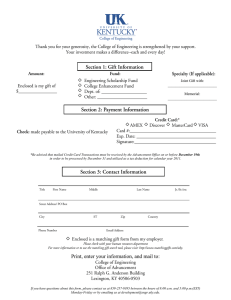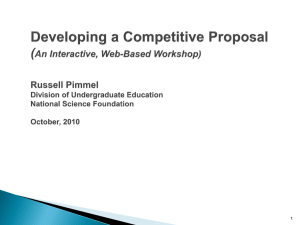Large Group Exam Review Sessions Close to an exam time in an SI supported course, you may experience an overflow of students, making it difficult to do activities commonly done at smaller sessions. Large numbers can be
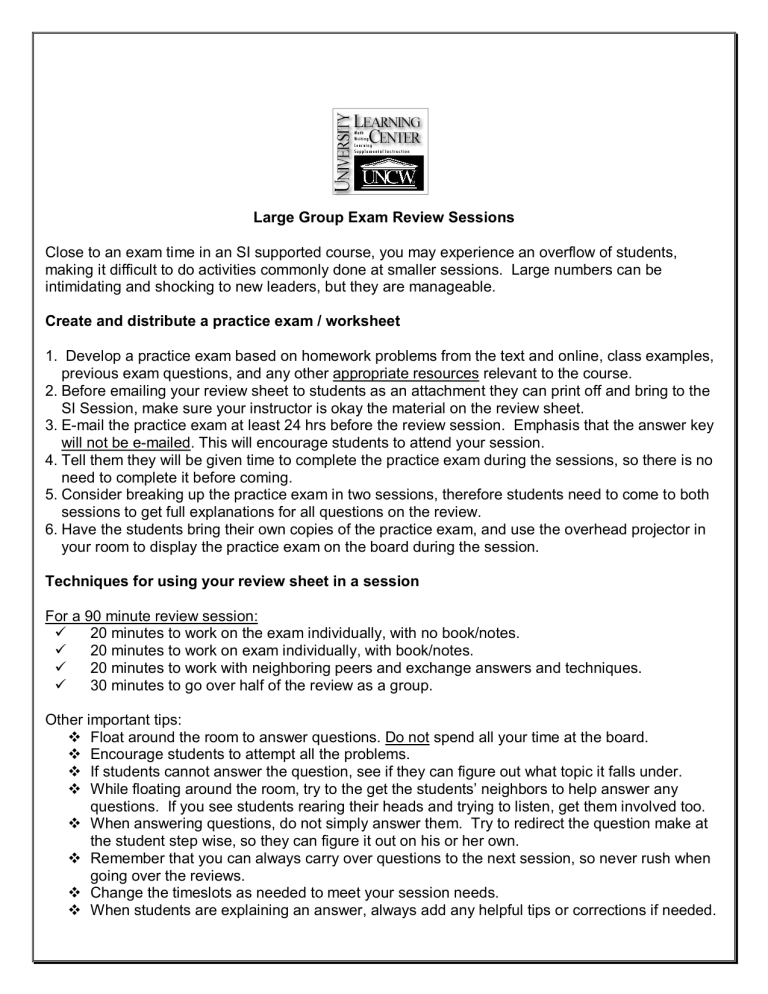
Large Group Exam Review Sessions
Close to an exam time in an SI supported course, you may experience an overflow of students, making it difficult to do activities commonly done at smaller sessions. Large numbers can be intimidating and shocking to new leaders, but they are manageable.
Create and distribute a practice exam / worksheet
1. Develop a practice exam based on homework problems from the text and online, class examples, previous exam questions, and any other appropriate resources relevant to the course.
2. Before emailing your review sheet to students as an attachment they can print off and bring to the
SI Session, make sure your instructor is okay the material on the review sheet.
3. Email the practice exam at least 24 hrs before the review session. Emphasis that the answer key will not be emailed. This will encourage students to attend your session.
4. Tell them they will be given time to complete the practice exam during the sessions, so there is no need to complete it before coming.
5. Consider breaking up the practice exam in two sessions, therefore students need to come to both sessions to get full explanations for all questions on the review.
6. Have the students bring their own copies of the practice exam, and use the overhead projector in your room to display the practice exam on the board during the session.
Techniques for using your review sheet in a session
For a 90 minute review session:
ü 20 minutes to work on the exam individually, with no book/notes.
ü 20 minutes to work on exam individually, with book/notes.
ü 20 minutes to work with neighboring peers and exchange answers and techniques.
ü 30 minutes to go over half of the review as a group.
Other important tips: v Float around the room to answer questions. Do not spend all your time at the board. v Encourage students to attempt all the problems. v If students cannot answer the question, see if they can figure out what topic it falls under. v While floating around the room, try to the get the students’ neighbors to help answer any questions. If you see students rearing their heads and trying to listen, get them involved too. v When answering questions, do not simply answer them. Try to redirect the question make at the student step wise, so they can figure it out on his or her own. v Remember that you can always carry over questions to the next session, so never rush when going over the reviews. v Change the timeslots as needed to meet your session needs. v When students are explaining an answer, always add any helpful tips or corrections if needed.


